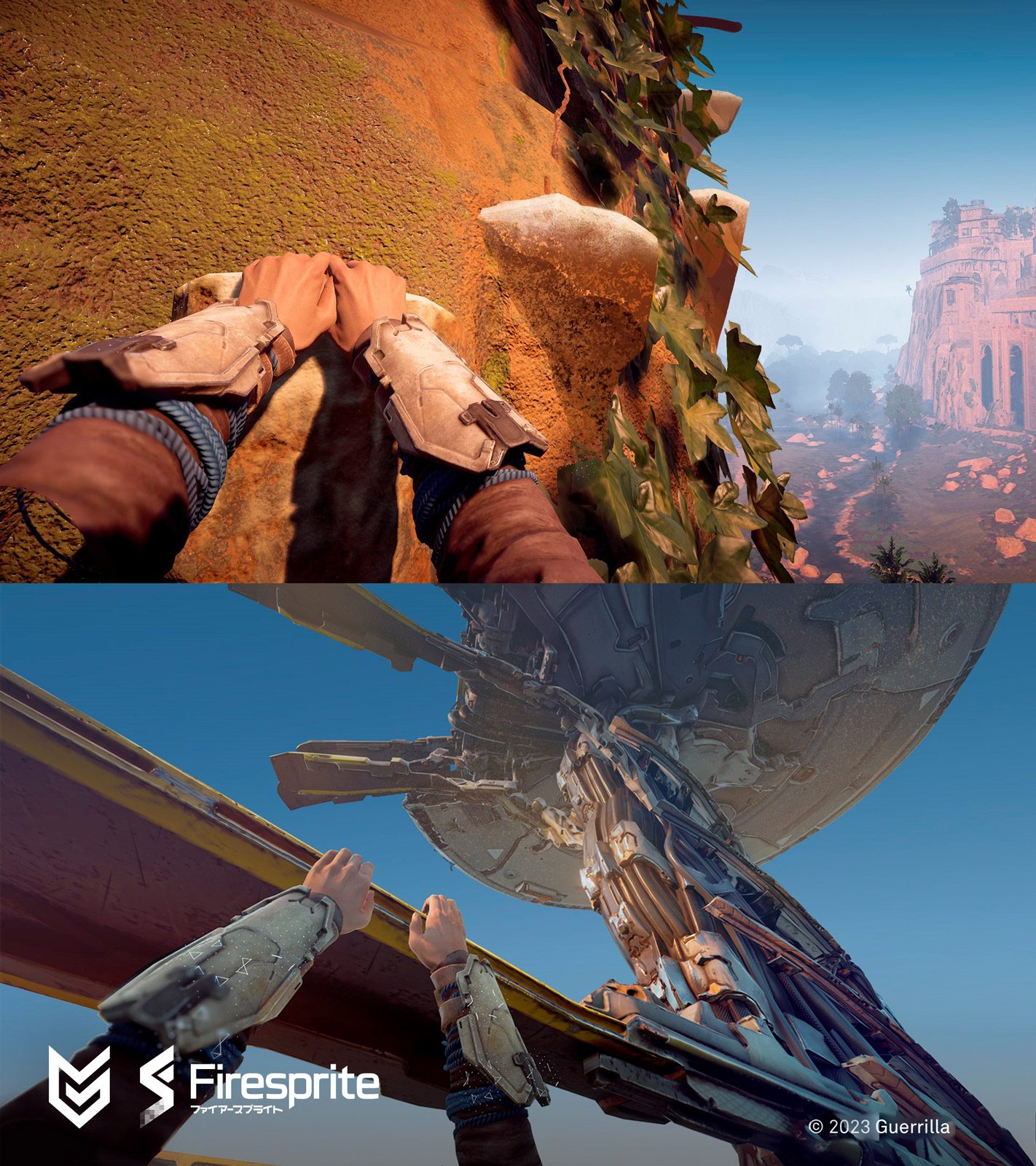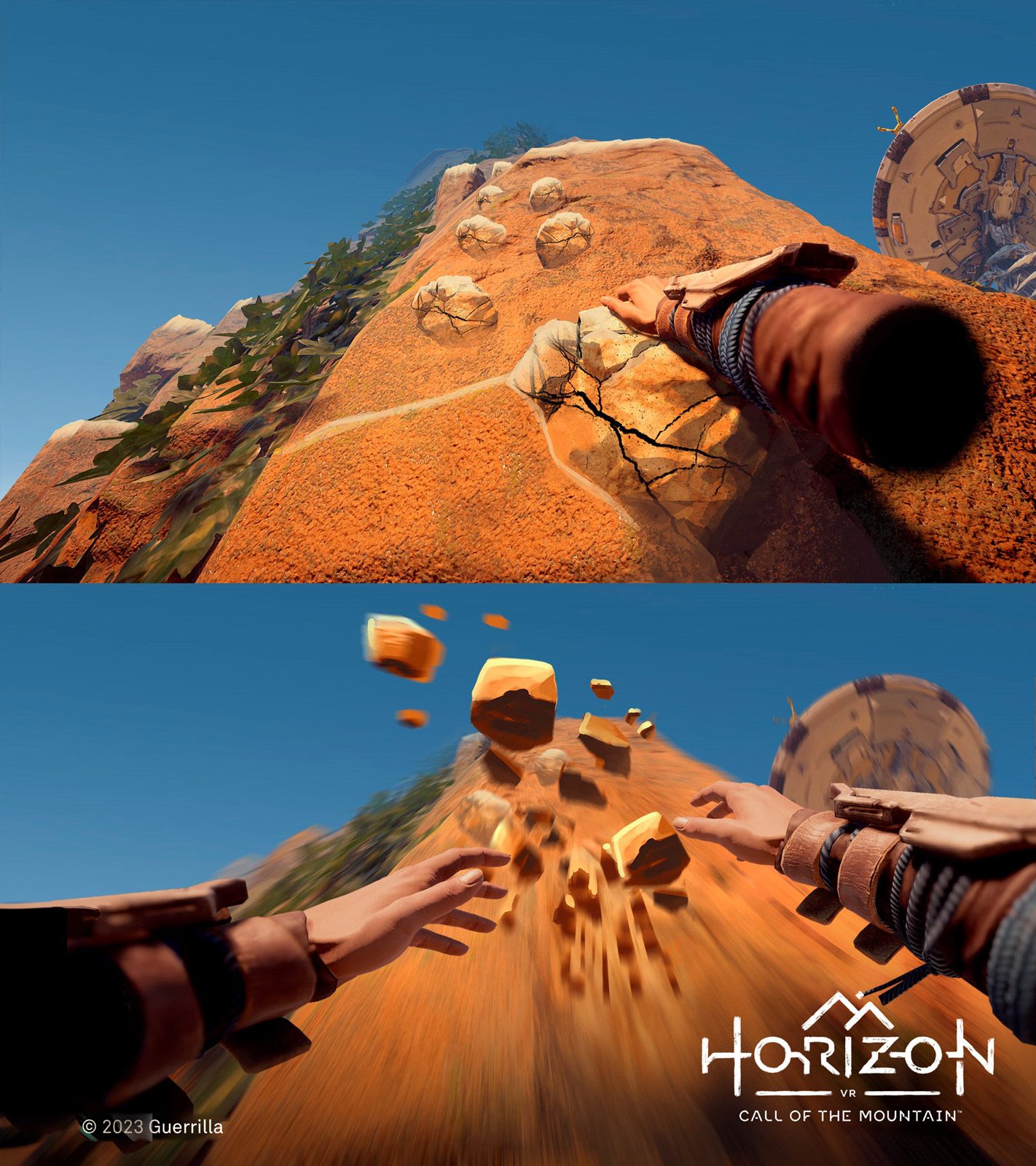Help Me Up
And when it comes to VR mechanics, sometimes the best ideas feel ‘obvious’ in hindsight. That’s certainly the case for the way Call of the Mountain helped players pull themselves up to the top of the ledge after scaling a cliff; many VR games resort to artificially lifting the player to the top of the ledge once they get close enough. Barnes and the team wanted something more comfortable, natural, and intuitive.
You can always count on a top-out handhold at the top of every climb in the game | View clip
“For such a long time, we relied on the ledge to ‘catapult’ the player into a standing position, and it was consistently causing comfort issues in early testing. Funnily enough, it was looking at roof and pool ladders that inspired our solution to this and caused us to use top-out holds above the ledge, so there was always something that the player could pull back on to get them into a standing position much more naturally,” he says.
The resulting solution meant that the game always has some natural and obvious hand-hold above the ledge—be it contextually disguised as a rock, a tree branch, or a broken fence post—making it easy for players to understand how to pull themselves up over the ledge into their new standing position.
– – — – –
With Horizon Call of the Mountain, Barnes and his collaborators at Firesprite and Guerrilla delivered one of VR’s rare ‘AAA’ games, culminating in an amazing piece of interactive artwork that certainly achieves its goal of giving users a taste of what VR looks like at its best. For a deep dive on the game itself, read our full review here.
More from this series:
Asgard’s Wrath – Sanzaru Games
Blood & Truth – Sony’s London Studio
Bonus Art
A few more pieces worth seeing that we didn’t have room for:





